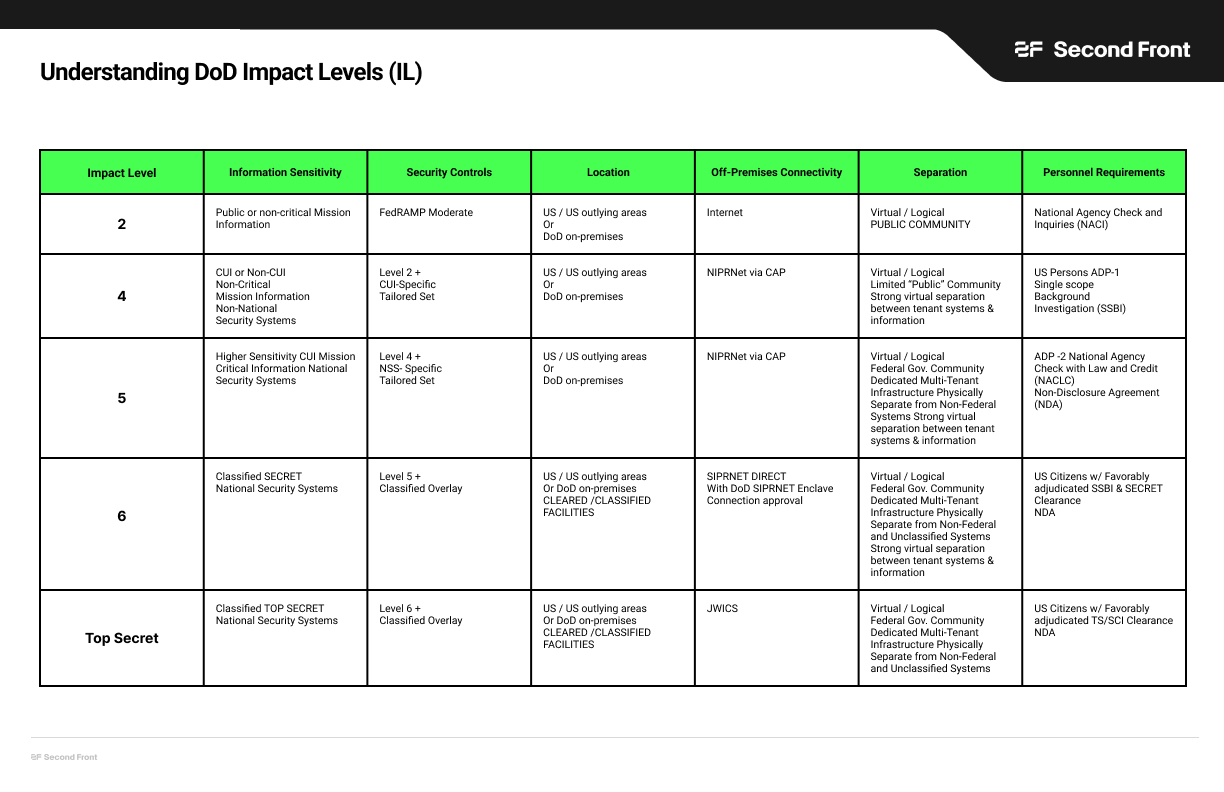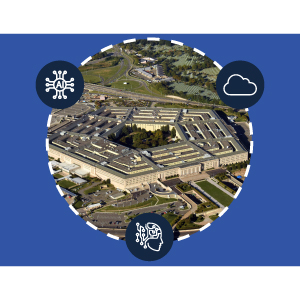Geospatial and space technologies are revolutionizing how Government agencies leverage location-based data, modern mapping platforms and advanced analytics to drive mission-critical decisions. From enhancing national security to improving infrastructure and environmental monitoring, these tools empower agencies to innovate and collaborate. In 2025 and beyond, Carahsoft and our vendor partners are excited to support Government professionals at premier events showcasing the latest advancements in geospatial and space tech. Join senior leaders, policymakers and IT experts to explore cutting-edge solutions and forge strategic partnerships. Below, we highlight top upcoming events.
SOF Week
May 5-8, 2025 | Tampa, FL | In-Person Event
SOF Week is the premier annual gathering for the international Special Operations Forces (SOF) community, jointly sponsored by U.S. Special Operations Command (USSOCOM) and the Global SOF Foundation. The event serves as a critical platform for fostering collaboration, innovation and excellence in modern special operations. Attendees will gain unique insights into the latest advancements in SOF capabilities, tactics and technology. The event attracts over 19,000 participants drawing SOF professionals, industry leaders and Government stakeholders from around the world.
Keep an eye out for the USSOCOM Annual Awards Ceremony. A highlight of the week, this awards dinner honors outstanding contributions to the SOF community and celebrates its achievements.
Join Carahsoft at its SOF Week exclusive pavilion alongside our technology partners, and do not miss our networking reception on Wednesday, May 7, 2025, from 6:00pm – 9:00pm at The Florida Aquarium.
GEOINT Symposium
May 18-21, 2025 | St. Louis, MO | In-Person Event
Hosted annually by the United States Geospatial Intelligence Foundation (USGIF), the GEOINT Symposium is the nation’s largest gathering of geospatial intelligence professionals, drawing over 4,000 attendees. Attendees will explore the intersection of technology and security, addressing challenges and opportunities in today’s complex geopolitical landscape. The event features industry-leading keynote speakers, main stage panels and hands on training workshops covering topics such as mission planning, precision timing and navigation, enhancing your practical skills and knowledge in geospatial intelligence applications.
This year’s theme, “Building a Secure Tomorrow Together,” will feature prominent keynote speakers, including The Honorable Tulsi Gabbard, Director of National Intelligence (DNI), VADM Frank “Trey” Whitworth, Director of the National Geospatial-Intelligence Agency, and General B. Chance Stalzman, Chief of Space Operations, US Space Force.
Carahsoft will have a significant presence at GEOINT 2025, featuring a pavilion with partner demos throughout the show. Connect with industry professionals at Carahsoft’s networking reception on Tuesday, May 20, at The Post Building, which will feature food and music.

GeoGov Summit
September 8-10, 2025 | Herndon, VA | In-Person Event
The GeoGov Summit is an annual forum that brings together leaders and experts from Government, industry, organizations and academia to advance the national geospatial strategy. The summit focuses on the evolving role of geospatial technologies in Governance, national security, infrastructure and public services. It serves as a platform for policymakers, technology providers and geospatial professionals to collaborate on improving data-driven decision making, enhancing interoperability and strengthening the National Spatial Data Infrastructure (NSDI).
Carahsoft is looking forward to attending and sponsoring the GeoGov Summit, along with our geospatial partners.
FOSS4G NA
November 3-5, 2025 | Reston, VA | In-Person Event
Free and Open Source Software for Geospatial North America (FOSS4G NA) is the premier open geospatial technology and business conference, offering a vibrant and welcoming atmosphere for technologists, end-users, academics and decision-makers. Attendees can look forward to a diverse program featuring presentations, workshops and networking opportunities that highlight the latest advancements in open source geospatial software and applications.
This event will feature:
- Insights from leading experts in the geospatial field, who will discuss current trends and the future direction of open source geospatial technology.
- Hands on workshops where attendees will have the opportunity to engage directly with open source geospatial tools and applications, enhancing their technical skills and knowledge.
Carahsoft is proud to sponsor FOSS4G NA 2025, supporting the growth of open geospatial technologies. With deep expertise in open source technologies, Carahsoft partners with top providers to deliver secure, scalable solutions that enhance operational efficiency and situational awareness.
CyberSat
November 17-20, 2025 | Reston, VA | In-Person Event
The CyberSat Summit is a key gathering dedicated to addressing cybersecurity threats and defenses in the satellite and space sectors. Since its inception in 2017, it has brought together satellite, space and cybersecurity professionals alongside Government, military and intelligence officials to discuss emerging technologies like artificial intelligence (AI) security, Zero Trust frameworks and quantum encryption. The SpaceInformation Sharing and Analysis Center (Space ISAC) will host a live tabletop exercise, testing incident response skills in a crisis simulation. Attendees can expect technical tracks on securing satellite networks, mitigating AI-driven threats and enhancing cyber resilience. Join the policy makers, threat analysts and engineers shaping the future of space security at this must-attend event!
Sessions to Look Out for:
- Unclassified Program (November 17-18): Two tracks focused on real-world case studies, system-level security challenges and in-depth technical approaches to combat emerging cyber risks
- Classified Program (November 19-20): This segment, held at the Aerospace Corporation’s Sensitive Compartmented Information Facility (SCIF) in Chantilly, VA, will cover a range of topics, including counterspace cyber applications of AI, threats to the supply chain, improving cyber resiliency in space and directed energy detection for satellite sensors.
Carahsoft is looking forward to exhibiting at the CyberSat Summit, along with our geospatial, space, AI and cyber partners.
Geography 2050
November 20-21, 2025 | New York City | In-Person Event
Geography 2050 is the American Geographical Society’s annual symposium, held in partnership with the Columbia Climate School. The 2025 theme, “The Future of GeoAI and the Planet,” will explore the convergence of geospatial technologies and artificial intelligence (GeoAI) and their transformative impact on understanding and addressing global challenges. Attendees will engage with experts from Government, industry, academia and non-profits to discuss how GeoAI can enhance our ability to monitor, predict and respond to environmental and societal changes. The symposium aims to foster a strategic dialogue on leveraging GeoAI for sustainable development and planetary stewardship.
This event will feature:
- “GeoAI Foundation Models,” a session that delves into the development of comprehensive GeoAI foundation models that are capable of processing vast amounts of geospatial data to provide actionable insights.
- “GeoAI and Glimpsing into the Future,” a session where experts will discuss how GeoAI enhances predictive modeling to anticipate future environmental and societal changes, aiding in proactive decision-making.
- “Plenary Session” with Jack Dangermond, where Esri’s founder and president will discuss the latest trends in Geographic Information System (GIS), advancements in GeoAI and the future of location intelligence.
- Technical workshops, where attendees will gain hands-on experience with Esri’s newest tools, including ArcGIS, AI-powered GIS workflows and spatial data science applications.
- User presentations, where attendees will learn how Government agencies and enterprises are leveraging GIS to solve real-world challenges in disaster response, national security and smart city planning.
Carahsoft is proud to support the geospatial community by partnering with leading vendors to provide innovative solutions in GeoAI and geospatial technologies. We look forward to participating in Geography 2025 this year!
Geo Week
February 16-18, 2026 | Denver, CO | In-Person Event
Geo Week is a premier conference focused on the integration of geospatial technologies, the built environment and 3D innovations. This annual conference brings together professionals from geospatial, architecture, engineering, construction (AEC) and related industries to explore advancements in technologies like Light Detection and Ranging (LiDAR), photogrammetry, remote sensing, reality capture and AI.
The event features over 200 speakers and 50+ sessions, including keynote presentations, educational workshops and product previews.
Carahsoft is excited to sponsor and exhibit alongside our geospatial partners and network with attendees across the industry.
SATELLITE 2026
March 23-26, 2026 | Washington, D.C. | In-Person Event
For more than 40 years, the SATELLITE Conference & Exhibition serves as a major gathering for the satellite, space and defense industries, bringing together professionals from around the globe to discuss the latest advancements, challenges and trends in the field. The conference features a comprehensive program that includes keynote addresses from expert speakers, engaging panel discussions and networking opportunities with industry leaders and peers, fostering collaboration and innovation.
We look forward to sponsoring and having a booth at Satellite 2026 to showcase how Carahsoft is supporting the industry in the space, satellite and defense industries.
FedGeoDay
April 2026 | Washington, D.C. | In-Person Event
FedGeoDay is the premier event dedicated to Open Geospatial Ecosystems within the U.S. Federal Government. This event provides attendees the opportunity to engage with Federal program managers, technology leaders, industry partners and organizations to share ideas, learn and network. The event includes presentations, workshops and networking sessions aimed at fostering collaboration and innovation in the geospatial community.
Carahsoft is proud to be a sponsor of FedGeoDay, reinforcing our commitment to advancing open geospatial technologies across the Public Sector. Look out for updates on our presence in 2026 on Carahsoft’s website.
Space Symposium
April 13-16, 2026 | Colorado Springs, CO | In-Person Event
2026 will mark the 41st Space Symposium! Over 10,000 space professionals and decision makers from commercial, Government and military sectors will gather to discuss critical issues, policy updates, innovative solutions and industry trends across the space community. The event will include expert panels, keynote addresses and networking opportunities with the top minds in the field. The Space Symposium is the number one international space event that is shaping the future of space exploration and technology.
Carahsoft is looking forward to sponsoring and exhibiting at the 41st Space Symposium.
Sea-Air-Space
April 19-22, 2026 | National Harbor, MD | In-Person Event
The Navy League of the United States (NLUS) Sea-Air-Space is the largest annual maritime exposition in North America. Attendees across Government and industry gather for innovative and educational discussions on advancements in maritime, naval and security technologies that will strengthen the future of the sea services. The event features informative sessions, policy discussions and 400+ exhibitors—from startups to Fortune 500 companies—showcasing the latest tech in the maritime field.
Carahsoft is looking forward to showcasing our Aerospace and Maritime technology solutions and partner ecosystem as part of the Carahsoft Partner Pavillion.
Looking Ahead:
The geospatial and space tech landscape is evolving rapidly, with GeoAI, precision navigation and cybersecurity at the forefront. As the industry continues to evolve, these events will continue to build momentum. These exciting gatherings will further integrate innovative technologies to address Government needs. Join Carahsoft at these events to explore innovative solutions and connect with industry leaders.
To learn more or get involved in any of the above events, please contact us at Geospatial@Carahsoft.com. For more information on Carahsoft and our industry leading Geospatial and Space Tech technology partners’ events, visit our Geospatial solutions portfolio.



 AI and ML
AI and ML IT Workforce Development and Retention
IT Workforce Development and Retention